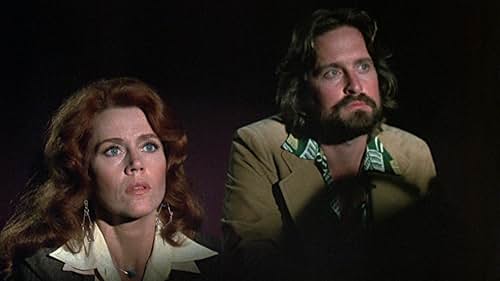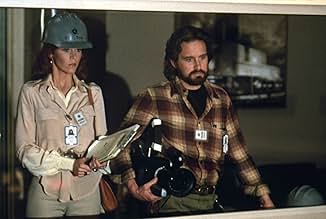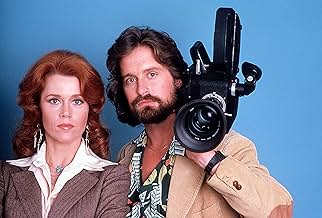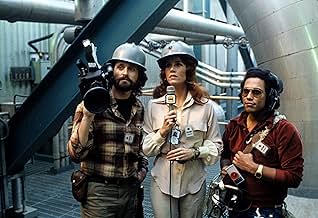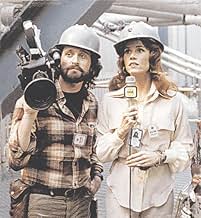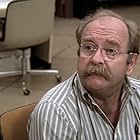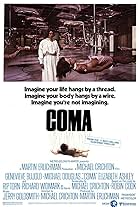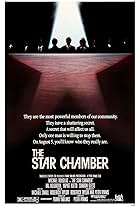A reporter finds what appears to be a cover-up of safety hazards at a nuclear power plant.A reporter finds what appears to be a cover-up of safety hazards at a nuclear power plant.A reporter finds what appears to be a cover-up of safety hazards at a nuclear power plant.
- Nominated for 4 Oscars
- 9 wins & 16 nominations total
Khalilah Camacho Ali
- Marge
- (as Khalilah Ali)
- Director
- Writers
- All cast & crew
- Production, box office & more at IMDbPro
Storyline
Did you know
- TriviaWhen the film was first released on 16 March 1979, nuclear power executives soon lambasted the picture as being "sheer fiction" and a "character assassination of an entire industry". Then twelve days after its launch, the Three Mile Island nuclear accident occurred near Harrisburg, Pennsylvania.
- GoofsIn the United States, there are two main types of commercial power reactors: PWR (Pressurized Water Reactor) and BWR (Boiling Water Reactor). When Gibson is explaining the basic workings of the plant to Kimberly Wells, the diagram on the board shows a PWR. This is indicated by the two-loop system in which the water is pumped through the reactor under high pressure to prevent boiling, then through a steam generator to create steam for the turbine using clean secondary water. Later, the dialog of the characters in the control room suggests they are dealing with a BWR, where water is allowed to boil in the reactor vessel, and steam is directly piped to the turbine, with no steam generator. Godell is concerned that the high water level in the reactor might reach the steam lines, of which there are none on a PWR vessel. Once Goddell and the operators realize the water level is low, the dialogue refers to Auxilary Feedwater, which is a PWR system. Also, in the action hearing later, the investigator talks about how the operators began cutting off feedwater and releasing steam in order to lower the reactor water level; this would happen only on a BWR.
- Quotes
Jack Godell: What makes you think they're looking for a scapegoat?
Ted Spindler: Tradition.
- Crazy creditsThe end credits run in total silence.
- ConnectionsFeatured in The Making of 'the China Syndrome' (1979)
- SoundtracksSomewhere In Between
by Stephen Bishop
Featured review
This is *not* a great film about nuclear power. It plays too fast and loose with reality for that--especially in a cringe-inducing scene where two scientists describe the consequences of a reactor accident. The catastrophic damage they describe is (even opponents of nuclear power would agree) a worst-case scenario, not the inevitable result of a breakdown in the reactor cooling system. Three-Mile Island suffered such a breakdown, and the surrounding "area the size of Pennsylvania" remained habitable.
That said, this *is* a great (and surprisingly subtle) film about complex technological systems, how they fail, and how the organizations that manage them go awry. Subtle? Well: 1) Jack Godell, the whiste-blowing hero, is a flawed and self-doubting normal human being rather than a crusader in shining armor; 2) His co-workers at the plant (as opposed to the "suits" they work for) are sympathetic working-class guys who gripe (as does everybody now and then) about burdensome government regulations and the clueless public; 3) The flaws in the plant are subtle, not glaring. The film, in other words, plays a lot fairer than you'd expect given its reputation (and pedigree).
Does this film have a definite whiff of late-70s, post-Watergate America about it? Sure. Does it have a political edge? Yes. For all that, though, it's still (sadly) relevant--our technology, and the people who are supposed to make it work, still fail us. See the movie, then skim the recent (August 2003) report on the Columbia disaster; the more things change. . .
That said, this *is* a great (and surprisingly subtle) film about complex technological systems, how they fail, and how the organizations that manage them go awry. Subtle? Well: 1) Jack Godell, the whiste-blowing hero, is a flawed and self-doubting normal human being rather than a crusader in shining armor; 2) His co-workers at the plant (as opposed to the "suits" they work for) are sympathetic working-class guys who gripe (as does everybody now and then) about burdensome government regulations and the clueless public; 3) The flaws in the plant are subtle, not glaring. The film, in other words, plays a lot fairer than you'd expect given its reputation (and pedigree).
Does this film have a definite whiff of late-70s, post-Watergate America about it? Sure. Does it have a political edge? Yes. For all that, though, it's still (sadly) relevant--our technology, and the people who are supposed to make it work, still fail us. See the movie, then skim the recent (August 2003) report on the Columbia disaster; the more things change. . .
Details
- Release date
- Country of origin
- Language
- Also known as
- An Element Of Risk
- Filming locations
- Sewage Disposal Plant, El Segundo, California, USA(plant exteriors)
- Production companies
- See more company credits at IMDbPro
Box office
- Budget
- $6,000,000 (estimated)
- Gross US & Canada
- $51,718,367
- Gross worldwide
- $51,718,367
Contribute to this page
Suggest an edit or add missing content


